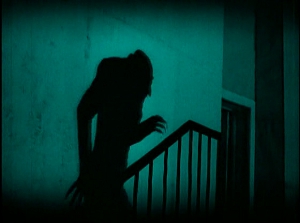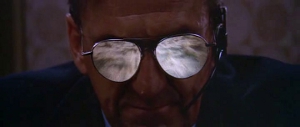All posts by David DeMoss
Trash Culture’s Dr. Who Reviews – The Celestial Toymaker (1966)
by Chad Denton
After the Doctor becomes invisible, the TARDIS materializes in the middle of a vast empty room. Dodo begs that they leave, but the Doctor remarks that he’s also intangible and can’t operate the TARDIS. Elsewhere a man dressed like a Mandarin sends two clowns to greet his “guests.” Back near the TARDIS, the Doctor deduces that they’re in the realm of the Celestial Toymaker. The man himself appears and causes the TARDIS and then the Doctor to vanish, leaving Dodo and Steven alone with the clowns, who begin to play harmless pranks. The Toymaker reappears and says he’s taken the Doctor to play a game, and Dodo and Steven must play several games on their own. If they win, they’ll be given a TARDIS (which, the Toymaker adds, might not be the real one). If they lose, they’ll be trapped in his world for the rest of their lives. Plus they’ll have to win their games before the Doctor wins his or they all lose.
At the Toymaker’s house, the Doctor accuses the Toymaker of luring people into his realm and literally turning them into toys, which the Toymaker doesn’t deny. However, he admits that he’s become bored and wants to make the Doctor into his “perpetual opponent.” He tells the Doctor that if he and his companions must win all the games they may leave and the Toymaker’s world will be destroyed. He then challenges the Doctor to a very complex version of a Tower of Hanoi game that will require 1,023 turns to win. Back at the room, Steven is challenged by the clowns to a grueling version of a Blind Man’s Bluff with an obstacle course. The Doctor uses the Toymaker’s communication device to warn them that the game is more dangerous than they think, but the Toymaker quickly retaliates by making the Doctor invisible again. The clowns win the game, but Dodo and Steven find out that the clowns were using a fake blindfold, allowing them to challenge the clowns to a second round, which they win. After the victory, the clowns transform into dolls and a TARDIS appears, but inside they only find a written riddle. Continue reading Trash Culture’s Dr. Who Reviews – The Celestial Toymaker (1966)
Nosferatu: A Symphony of Horror (1922)

Here it is, then: Vampire Movie Zero. As far as anyone can tell, this is the first cinematic adaption of the Dracula and the film that popularized vampire mythos more than anything since Bram Stoker’s original novel. Studied by film students, poured over by professors, homaged by professionals and commentated upon by ninety years worth of talking heads…it’s too bad the damn thing’s so rarely seen. By people, I mean, out in the really-real world. If more people saw this, they might demand more from their vampire fiction, because they might realize how little its really moved, even after all this time.
If Stoker’s estate had anything to say about it, we would’ve never seen this film at all. Its producer and costume designer, Albin Grau, first heard a tall tale about a vampire from a Serbian farmer while serving on that front in 1916. After the war, he returned to Germany and founded the studio Prana Film for the express purpose of making a vampire movie. This one.
Problem: Stoker’s estate still owned the rights to Dracula, which had been adapted to the stage several times in the twenty-five years since its publication, but never filmed. (Again, as far as we know – something like half the films made in the Silent Era are officially lost to us.) Solution? Change everyone’s name (Mina became “Ellen,” Jonathan Harker became “Hutter,” Count Dracula became “Count Orlock”) and set the story in 1830s Germany. Surely, they thought, that will stave off the lawyers! It didn’t, and lawsuits followed, eventually bankrupting Prana Film and requiring all prints of Nosferatu be destroyed. Thankfully, that genie’d already escaped via several international distributors and several (often low-quality) nitrate stock copies. Continue reading Nosferatu: A Symphony of Horror (1922)
A Podcast from the After Movie Diner Walks Among Us

Having connived and blackmailed my way into become his “fount of all comic book knowledge and information” I sat down with Jon X of the After Movie Diner to discuss all six of the films that currently compose Earth 199,999 (otherwise known as the Marvel Cinematic Universe). Listen here
or you can visit the After Movie Diner’s website and download this or any of Jon’s other wonderful podcasts to your mobile device of choice on Stitcher, iTunes or Talkshoe. (And while you’re there, you could do worse than give Jon the highest rating possible and – who knows – maybe even a review.)
Those six films are, of course, Iron Man, The Incredible Hulk, Iron Man 2, Thor, Captain America: The First Avenger and The Avengers, which long-time readers (both of you) watched me suffer through in real time. New readers: now’s your chance to blow some dust off these old reviews and discover all the wonderful ways I’ve contradicted myself over the years. More to come this Friday.
Trash Culture’s Doctor Who Reviews – The Ark (1966)
by Chad Denton
Dodo frustrates Stephen by being clueless to an almost surreal degree, hopping out of the TARDIS without hesitation into a jungle and thinking she can just hop on a bus back to London. The Doctor actually agrees with Dodo – at least insofar as he thinks they actually are still on Earth somewhere. Dodo, who is at least knowledgeable about animals, notes that the jungle is filled with different species from across the world while the Doctor discovers that there is no sky but a metal roof. The mystery unravels when the Doctor and the others are taken to a group of humans by alien beings, the Monoids. They are told that the ship is a futuristic Ark, taking the human race and samples of all its species away from an Earth that’s slowly being destroyed by an expanding sun to a new world much like Earth, a journey that will take 700 years. The Monoids are an alien race that migrated to Earth long ago from their own dying world and “offered” to become servants in exchange for their new home. Most of the human population has been reduced to a microscopic state and placed in stasis until the ship finally arrives at the new planet, while the humans left active are Guardians, who, along with their descendants, are expected to protect the ship. After figuring out the Guardians’ understanding of time, the Doctor deduces that they’ve wound up 10,000,000 years past the twentieth century. Continue reading Trash Culture’s Doctor Who Reviews – The Ark (1966)
Westworld (1973)

If you were alive on planet Earth in 1993, you probably found yourself face-to-face with the work of Michael Crichton. He was fifty-one by that point, and a multiple New York Times bestselling author with a shelf’s worth of fiction and non-fiction to his name. Most didn’t bother looking at them, but some of us did, and through them we learned Jurassic Park was the end point of a thought-line that runs through Crichton’s whole career, possibly his entire life.
To tease that thought-line out, it’s best we step back into the shoes of a thirty-one-year-old Crichton as he attempted to become a full-time filmmaker. It’s 1973, and Crichton’s last two books are doing well, though nowhere near as well as his first real success, The Andromeda Strain. Published in ’69 and made into a movie two years later, Strain contains the seeds of Crichton’s literary obsessions…though neither book nor film are as thrilling as they think are.
Which is probably why his next book, Binary, reads more like an episode of CSI than as an actual Michael Crichton novel (and since it was the last one he published under a pseudonym, that kinda fits). Police procedurals always sell, especially when they can wow the audience with all that fun, new forensic technology modern cops (supposedly) get to play with these days. So Binary became a made-for-TV movie, re-titled Pursuit, with Circhton himself directing. Continue reading Westworld (1973)
Trash Culture’s Dr. Who Reviews – The Massacre of St. Bartholomew’s Eve (1966)
by Chad Denton
The Doctor and Steven arrive in a place the Doctor quickly figures out is sixteenth century Paris. Right away the Doctor wants to try to meet Charles Preslin, a famous apothecary (sort of the early modern equivalent of a pharmacist). Unknown to them they’ve arrived at one of the worst possible times to be in Paris this side of 1792; Huguenot noblemen are staying in the city to celebrate the wedding between the Protestant leader Henri of Navarre and the French princess Marguerite de Valois, and tensions are running high between the Huguenots and Catholics. Not knowing this, the Doctor reluctantly agrees to let Steven go sightseeing while he tries to find Preslin, but makes Steven promise not to talk to anyone unless he must. However, once the Doctor leaves Steven accidentally disobeys by getting into an argument with a bartender, which leads to him befriending a Huguenot named Nicholas. Meanwhile the Doctor finds Preslin, who is in hiding and is terrified of being persecuted by agents of the Abbot of Amboise, and encourages his research in science. Continue reading Trash Culture’s Dr. Who Reviews – The Massacre of St. Bartholomew’s Eve (1966)
The Avengers (2012)
Open Your Eyes (1997)

Alejandro Amenabar was another one of those film school drop outs who said “screw it” and began writing, producing, directing and staring in his own films in the mid-90s. There’s a good chance you haven’t heard of him because he went to school at the Universidad Complutense in Madrid instead of UCLA or whatever the hot New York film school is this season. (Really should ask my New York friends about that at some point when I start caring.)
Amenabar’s first movie, Thesis, was about a Universidad Complutense student Nancy Drewing her way towards a snuff film ring. Open Your Eyes (Abre los ojos) is his sophomore movie, the kind that proves you can avoid the stereotypical sophomore slump if you’re smart and/or talented enough. Not only is Open Your Eyes better than Thesis, it’s more interesting and seems a bit more personal. As you’d expect from any movie born out of a flu-based fever dream. Continue reading Open Your Eyes (1997)
